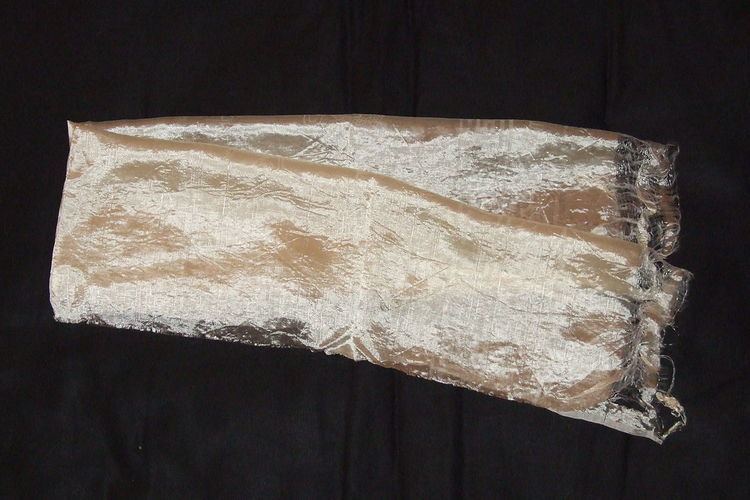Tibetan ཁ་བཏགས་ THDL kha tak Mongolian хадаг | Wylie kha btags Tibetan Pinyin | |
 | ||
A khata (Tibetan: ཁ་བཏགས་; Dzongkha: དར་, Dhar, Mongolian : ᠬᠠᠳᠠᠭ / Mongolian: хадаг / [χɑtɑk], khadag or hatag, Nepali: खतक khada, Chinese 哈达; pinyin: hādá) is a traditional ceremonial scarf in tengrism and Tibetan Buddhism. It originated in Tibetan culture and is common in cultures and countries where Tibetan Buddhism is practiced.
The khata symbolizes purity and compassion and are worn or presented with incense at many ceremonial occasions, including births, weddings, funerals, graduations and the arrival or departure of guests. It is usually made of silk. Tibetan khatas are usually white, symbolising the pure heart of the giver, though it is quite common to find yellow-gold khata as well. Tibetan, Nepali, and Bhutanese khatas feature the ashtamangala. There are also special multi-colored khatas. Mongolian khatas are usually blue, symbolizing the sky. In Mongolia, khatas are also often tied to ovoos, stupas, or special trees and rocks.
